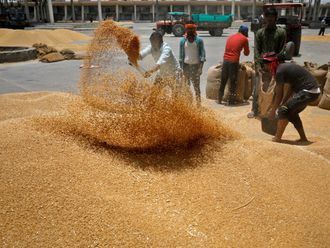Hyderabad: Even as the BJP in Telangana was pulling out all the stops to make its “Hyderabad Liberation Day” celebrations a big success, many other angles of the historic day of the merger of erstwhile Hyderabad state in Indian union have come into sharp focus.
The Bharatiya Janata Party (BJP) had mobilised large numbers for a public meeting at Warangal to be addressed by party president Amit Shah.
But while the party’s leaders and cadres were quite excited over the presence of their top most leader to celebrate the occasion, various other organisations and communities, especially Muslims, were not hiding their anxiety and apprehensions over the hullabaloo.
BJP secretary N. Indrasena Reddy told a news conference in Hyderabad on Friday that the party was celebrating the day when Hyderabad was liberated from “tyrannical” rule of Nizam as the state government had failed to celebrate the day.
“Chief Minister K. Chandrasekhar Rao, while agitating for a separate Telangana state, had said that the new state will officially celebrate the day. Now he should explain why his government was not celebrating it,” he said.
“September 17 should be celebrated as grandly as August 15 is celebrated,” he said demanding that the history of the struggle against the Nizam should be included in the school curriculum.
While Chief Minister KCR was silent on the issue, his firebrand daughter and MP Kavitha strongly rejected the BJP’s demand.
“It was not liberation day but a day of merger and we will celebrate it as such,” she said.
Several other organisations, including Telangana Joint Action Committee, also opposed the idea of any celebrations.
A prominent Muslim organisation, Majlis-e-Tameer-e-Millat, said the demand for celebrating the day was part of the venomous campaign to distort the history and image of the Nizam of Hyderabad.
“For the last few years attempts were being made to vitiate the minds of the new generation through false propaganda and portray the last Nizam Mir Osman Ali Khan as oppressor and tyrant. The objective of the propaganda is to create enmity between Muslims and Hindus”, said Syed Ziauddin Nayyar, the vice president of the organisation.
“If the Nizam was an oppressor, why was he appointed the governor and Raj Pramukh of the state until 1956,” he asked. “The purpose of describing the day as Liberation Day or Salvation Day was to hurt the feelings of Muslims”.
Meanwhile a new angle has come to the fore with the revelation that Pakistan was still trying to keep the issue of Hyderabad on the agenda at the United Nations Security Council.
Addressing a round table conference of the historians, politicians and other eminent personalities organised by Dr Marri Channa Reddy Memorial Trust many speakers noted with concern that Pakistan had made a request to UNSC in January to retain Hyderabad on its agenda.
Marri Shashidhar Reddy, the secretary of the Trust said that the mention of Hyderabad in UN documentation could not be ignored easily.
K.R. Suresh Reddy, former Speaker of AP Assembly said it was a matter of serious concern that Pakistan may raise the Hyderabad issue in the UNSC. “This is nothing but Pakistan’s ploy to create unrest here,” he said urging the government of India to take up the issue and settle it in the UN.
When the Indian government launched “Operation Polo”, through the army, to bring Hyderabad state into the Indian union, by putting an end to the Nizam’s rule in September 1948, the Nizam government had taken the matter to the UN Security Council. However before the issue could be debated in the UNSC, the operation was completed on September 17, 1948 with the Nizam government surrendering to the Indian government.
However, the issue remained pending before the UNSC till now.
While Hyderabad was founded by the Qutub Shahi rulers, their era was brought to an end by the Moghul Emperor Aurangzeb.
The Asaf Jahi era began in 1724 with Qamaruddin Khan Asaf Jah I taking the reigns of power in Hyderabad as the Subedars of Moghuls and it continued till 9148 when Hyderabad, one of the biggest and most developed princely states was merged in to Indian union. The last Nizam Mir Osman Ali Khan, who under the pressure of Qasim Ali Rizvi had inclined to remain independent of India, agreed to become part of India and was appointed as Raj Pramukh or the head of the state till 1956.











